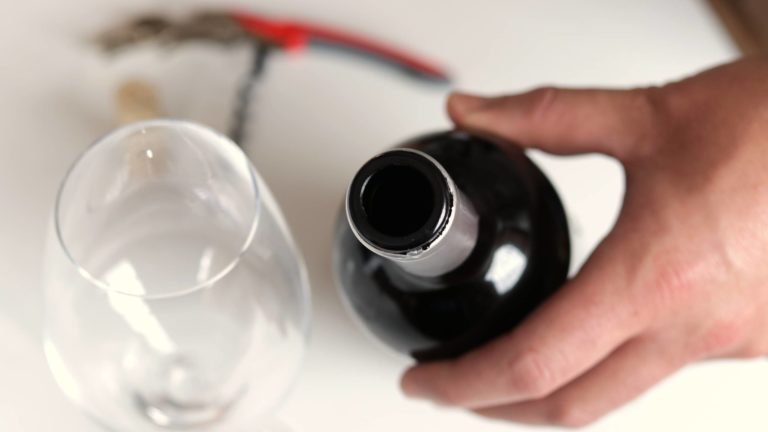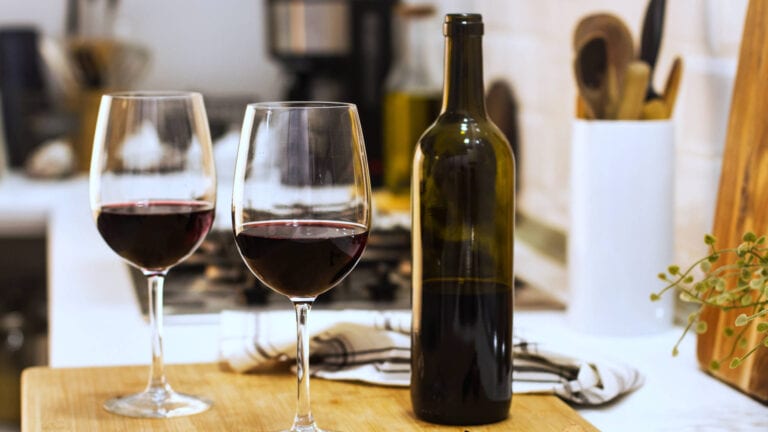Wine myths! We’ve all heard them and have probably given them a go at home at some point too, but are they true? Our in-house myth buster and wine buyer Alex Davies, has taken on the challenge to answer some of these questions that have had us all talking.
Myth 1: Putting a silver spoon in a bottle of bubbly keeps it fizzy
Let’s be honest, we’ve all done it. We’ve all popped a silver spoon into a bottle of bubbly to keep it fizzy for longer but this is a myth that’s still very much up for debate. In theory, the metal spoon will keep the neck area of the bottle colder as the metal chills and emits cooler air around it. This makes it harder for the gas to escape from the wine, keeping it from going bad. That being said, there have been plenty of tests carried out by respectable researchers who say this isn’t effective at all.
What we say: Keep your bottle of fizz cold from the moment of opening to make it last longer and secure with a champagne bottle stopper.
Myth 2: The larger the punt at the base of a bottle, the better the quality of wine
Okay, so there’s not a universally accepted reason for the ‘punt’ to be at the base of a bottle of wine but there are definitely super creative explanations out there! Here are a couple of examples that caught our eye:
1. The indent means less wastage when pouring the wine ensuring there’s no sediment in your wine glass.
2. It improves the structural integrity of the bottle and helps with certain stacking/storage systems.
What we say: The punt is no direct indication of the quality of the wine as the winemaker can choose to pack their wine in any bottle. But it’s true that some producers of premium wines spend a little more money on glass bottles with a punt, but it’s just decorative.
Myth 3: The older the vintage, the better the quality
A classic wine myth that we all probably believed at some point is that the older the vintage, the better the quality of the wine.
What we say: The vintage of a bottle of wine is a reference only to the conditions of the growing season, which absolutely affects the quality and style of the wine. So broadly speaking, an old wine of a poor vintage is unlikely to be as appealing as a young wine of a good vintage. Don’t get too carried away with the vintage of a wine though as some wines don’t cope well with the ageing process. To avoid these wines, pick one with good levels of tannin, acidity and alcohol. These act as preservatives that help prevent spoilage so the fruit flavours can develop safely over time.
Myth 4: Boxed wine isn’t that great
Once the seal is broken the clock starts ticking, so some bag-in-box drinkers may have had a pretty bad experience with oxidised wine.
What we say: Technology has improved massively within the wine industry. Not only does the wine keep for much longer within a bag-in-box, but the packaging is also now robust enough to contain excellent quality wine. This definitely explains why more wine drinkers are buying box wine in the UK.
Myth 5: The more expensive the wine, the better it tastes
This is largely down to preference but there are lots of reasons why you should spend more on a decent bottle of wine. First of all, UK duty and VAT are pretty much a fixed cost of any bottle of wine, so the extra you pay is only going towards the wine itself. There are also many quality assurance processes in winemaking that have a positive impact on the quality but also increase the price. This includes handpicking and hand sorting the grapes, limiting the number of grapes on a vine (fewer grapes = better quality), use of oak, and many more.
What we say: ‘Not true’ is the obvious answer, but there are plenty of good reasons to spend more on wine as we’ve already said above. There’s no shame though in preferring the taste of a £10 or under bottle of wine. It’s all down to personal choice.




